News and agenda
30 January 2019
The (im)practibility of materials in a circular economy
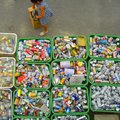
Our growing world population and increasing prosperity is putting more and more pressure on global energy consumption and the demand for materials. The challenges in the area of energy consumption, materials consumption and climate change are closely interlinked, but the use of materials is often something we take for granted.
28 January 2019
Nanoscale Failure in Steel

In our future energy system, electricity derived from solar panels and wind turbines, and heat derived from geothermal wells, heat pumps, solar collectors and urban surfaces will constitute cheap and abundant sources of carbon-free energy for our built environment and for our industries.
16 January 2019
Research to improve welding process for manufacturing industries
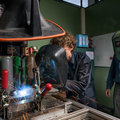
10 January 2019
Advanced electron microscope at MSE
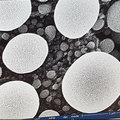
Since the of December 2018, the faculty 3mE is the proud owner of a new advanced research instrument. In the MSE department a new electron microscope, equipped with a Xe+ ion-beam, is located to facilitate materials research in 3D.
17 December 2018
Peter Visser receives the Scientist of the Year Award from AkzoNobel
26 November 2018
Corrosion expert Arjan Mol does not expect a new rust ghost
Corrosion expert Prof. dr. Arjan Mol -TU Delft Materials Science and Engineering department - does not have the impression that cars suddenly start to rust horribly. But he thinks it's a good thing that garagists keep a close eye on corrosion protection.
16 November 2018
Chrome-6 is still the best protector against rust
Chromium-6 is praised in aviation because it protects aircraft against corrosion. The rusting and mold formation can have devastating consequences. Yet there is a downside to the chrome-6 medal, because this form of chromium is polluting and carcinogenic.
29 May 2018
Not all yellow in The Sunflowers will last forever
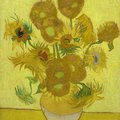
Researchers from the Universities of Antwerp, Perugia and Delft together with museum staff have painstakingly examined Sunflowers by Vincent van Gogh (Van Gogh Museum, Amsterdam). He painted this iconic work, a composition dominated by yellow tints with some orange and blue accents, in 1889 in Arles, France.
08 May 2018
Test developed which predicts degradation 20th century paintings

Titanium white is a pigment used in the 20th century by painters like Picasso and Mondriaan. The ‘bad’ version of this pigment can lead to early aging of paintings when expowed to UV light. TU Delft researcher Birgit van Driel has - in close cooperation with AkzoNobel, the Rijksmuseum and the Cultural Heritage Agency of the Netherlands, and within the context of the Netherlands Institute for Conservation+Art+Science+ (NICAS) - developed a straightforward method to estimate the potential risk to painting. This will enable museums to take timely action to prevent damage to paintings. On Wednesday 9 May, Birgit will be defending her PhD at TU Delft.
01 February 2018
Going deeper into the next generation of implants, with three disciplines at once
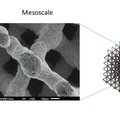
It has been the undisputed gold standard for implants for dozens of years: titanium. This strong, light and corrosion-resistant metal can be safely incorporated into the body. And yet there is a great deal of discussion about how titanium implants are made. The rise of 3D-printing technology has opened the door to new manufacturing possibilities.